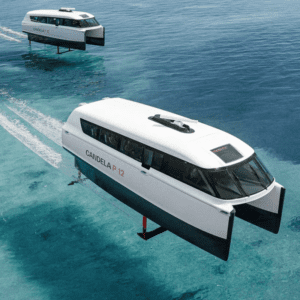When he was 11 years old, Joe Poulin started recycling computer disks from his home in Montreal, at 13 he was buying and reselling computer parts, and by age 15 had taught himself web design. He was just 17, when he flew to Barbados to convince the owner of a vacation property to let him build a website to attract visitors. The result, Luxury Retreats, combines a web platform with the personalized concierge-like service associated with high-end getaways. Since its startup in 1999, the company has grown to more than 2,100 villas in more than 50 destinations with about 150 employees, and the company is on track to reach sales of $100-million a year at the end of its fiscal year in June. Some 50 contract workers worldwide inspect properties and decide whether to approve them for inclusion. In this edited transcript of his conversation with Financial Posttechnology reporter Christine Dobby, Mr. Poulin, founder and chief executive of Luxury Retreats, shares how he applied technology to the travel industry and how he's used the more recent popularity of new types of travel sites to his advantage.
Q How did you decide to start a vacation property listing website when your (self-taught) expertise was in computers?
A I knew how to build websites, I knew how to rank them on search engines and when I was speaking with the homeowner in Barbados, I realized he had no concept of how to drive traffic to a website. I thought why not build one website for many homes, drive the traffic to it and then figure out some kind of arrangement for the traffic.
My original model was to do a listing service similar to what Homeaway.com does today, charging homeowners to list their properties. My objective was to make a million bucks by listing a thousand homes and charging each $1,000 a year. Where it didn't work right away was I literally showed up at peoples' doors and no one was giving a 17-year-old $1,000 for this Internet stuff.
I went back to Montreal and built the site anyway (under a brand we still have today, Caribbeanway.com). The industry already [had a system] where you took a cut of the revenue from a sale and I decided that was a good way to approach it because when I talked to homeowners I could say, "I just need some pictures and information, if you never hear from me again it doesn't cost you anything. If you do, it's because now I'm bringing revenue and we'll do a revenue share."
When I kicked off the company we had about seven properties and I decided to use the Internet and the search marketing I knew how to do to attract traffic and then take a cut of the revenue. That's the model we … still use today.
Q Why did you decide to target the affluent travel market?
A It was initially a fluke because the first property I dealt with when I was building that first website was a luxury home. I was debating how far down market to go and I saw that dealing with someone at $100 a night versus someone at $1,000 or $2,000 a night – their sensitivity to how much their time is worth, how important it is for things to be absolutely right and the willingness to pay for that is different. In realizing that early on, I decided to focus more on the affluent market. I saw an opportunity in tech and attracting people on the web and marrying that with high-touch service that should go along with what you get in a five-star hotel and wasn't really apparent in the industry at that point.
There's more… Continue reading the complete article "How Luxury Retreats Used Technology to Transform the Travel Industry" on the Financial Post website.












